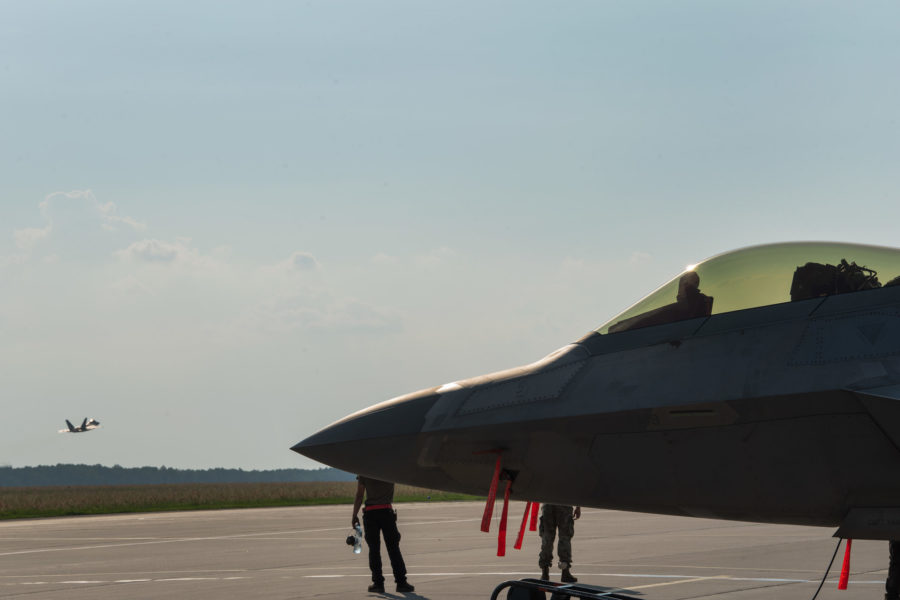F-22 Raptors are leaving Europe after a four-month deployment, U.S. Air Forces in Europe said. The stealth fifth-generation fighters were sent to NATO’s Eastern Flank in July and mainly operated out of Poland, conducting air policing missions in response to Russia’s renewed invasion of Ukraine. F-15E Strike Eagles from RAF Lakenheath, U.K., have taken over the air policing mission out of Poland as of Nov. 29, U.S. Air Forces in Europe (USAFE) said. A spokesperson for USAFE said the F-22s are “transitioning” back to their home base.
It was a busy deployment for members of 90th Expeditionary Fighter Squadron from Joint Base Elmendorf-Richardson, Alaska. In addition to operating out of Lask Air Base in Poland for the air policing mission, they supported NATO’s Steadfast Noon tactical nuclear exercise. They also deployed to the Greek island of Crete and to Norway in what the Air Force said were examples of agile combat employment (ACE), the service’s plan for more distributed operations.
The F-22s have deployed to hotspots before, conducting multiple deployments to the Middle East in 2022. The deployment of American fifth-generation air power to Poland was part of America’s increased presence in Europe in the wake of Russia’s renewed invasion of Ukraine. Poland sits just to the east of Ukraine and is also hosting U.S. ground troops.
F-15E Strike Eagles from the 492nd Fighter Squadron—the “Bolars” and “Madhatters”—have taken the F-22s’ place at the Polish Air Force base.
The Air Force has a limited number of F-22s to go around, with about 180 in service, and plans to start sunsetting the plane in the 2030s. F-22s from Joint Base Elmendorf-Richardson recently deployed to Kadena Air Base in Japan on a rotational basis as the Air Force begins to remove aging F-15Cs that have been stationed there.
The departure of the F-22 from Europe means no American fifth-generation fighters are conducting NATO air policing missions, though fifth-generation F-35s Lightning IIs are in the region based at RAF Lakenheath. Those aircraft, from the 495th Fighter Squadron, or “Valkyries,” recently deployed to Italy for a two-week-long combat training exercise, along with allied F-35s. A USAFE spokesperson pointed to that exercise as an example of the significant air power that remains in the region.
Other air policing missions underwent changes coinciding with the turn of the month. Polish F-16s, augmented by French Rafales, recently took over the lead of NATO’s Baltic air policing mission from the Hungarian Air Force.
Since February’s renewed Russian invasion, NATO has further enhanced its air policing missions.
Gen. James B. Hecker, the head of U.S. Air Forces in Europe-Air Forces Africa and NATO’s Allied Air Command, has emphasized more than just air policing.
NATO conducts training missions that simulate attacks on ground-based air defenses and missile defense exercises. Aircraft from France, Spain, Turkey, and the U.S. recently conducted a test with a French air defense system in Romania.
“We have combat air patrols in the air, with live weapons, as a deterrent to Russia. But we don’t want to just do that. Because if you just do that, you’re just doing circles in the sky, and you get very inproficient,” Hecker said at AFA’s Air, Space, & Cyber Conference in September. “As we move forward, the new normal is going to be a lot of practicing with other nations … on missions that we’re going to have to do should Russia decide to attack a neighbor.”
